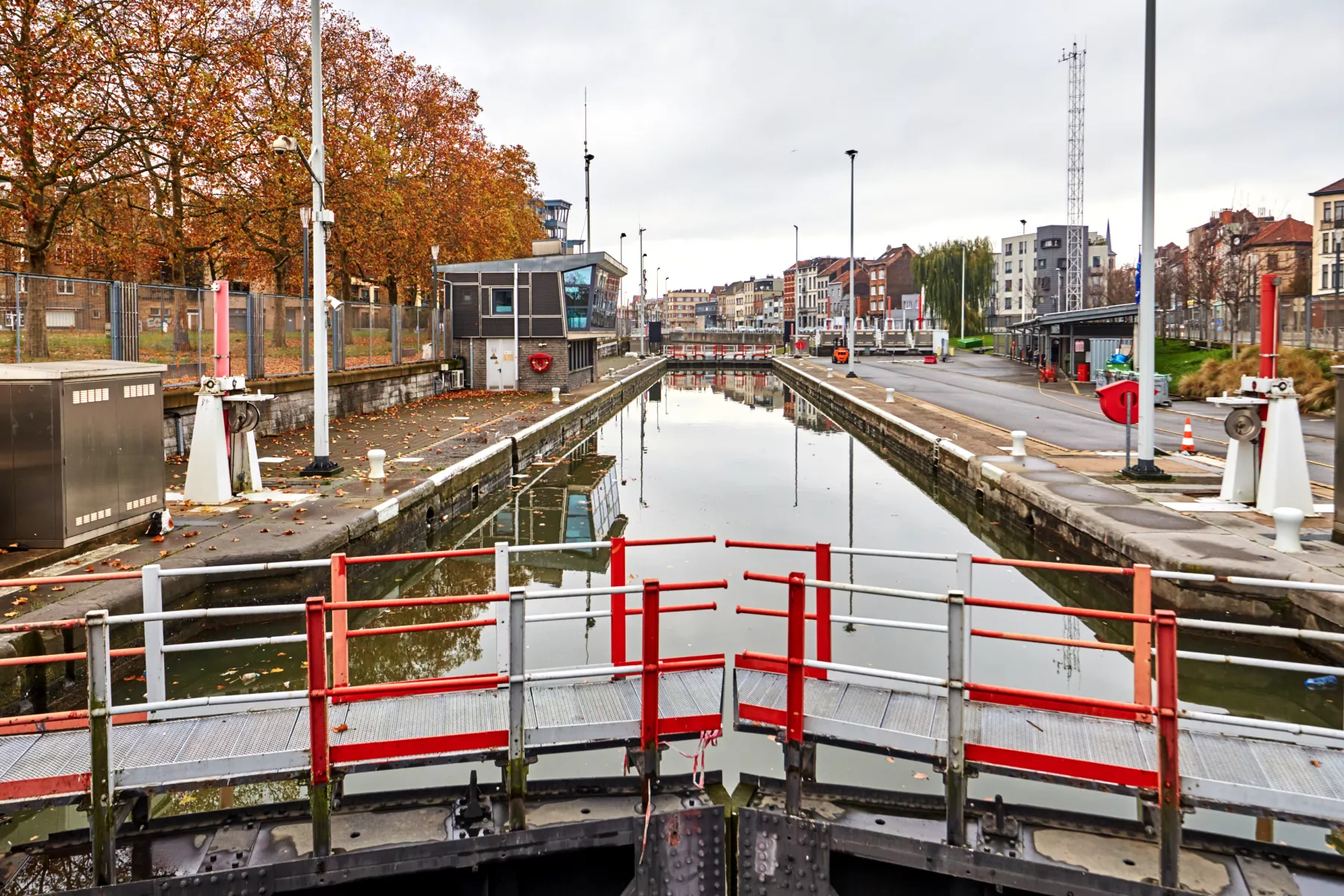I beg your pardon?
How does a lock work? How many tons can a barge carry? How old is the captain? Everything you've ever wanted to know about the canal, without knowing who to ask. You’ll find it here!
Bollards, silent port heroes!
The silent heroes of the port!
They are there, day and night, in all weathers, to secure the barges: the bollards, or mooring posts, along the quays. More than just a decorative feature, they play an essential role:
- For boatmen, they allow boats to be securely attached to a hawser or mooring line.
- For the security services and the police, they serve as precise landmarks thanks to a clever system of numbers and letters (even numbers on the right bank, odd numbers on the left bank), so they know exactly where to go in case of an incident.
Our bollards are not the same everywhere. The tensile forces exerted on the bollards depend on the load capacity of the ship moored there. In the outer port, for example, we have heavier bollards because we also accommodate larger ships.
But do you know how many bollards there are along the 14 kilometres of canal in the Brussels-Capital Region?

Did you know that Brussels once had 2 canals?
In the 16th century, the first canal was dug to link Brussels and Antwerp. It was not until 300 years later (in 1832) that a second canal was built to link Brussels and Charleroi to the south.
But there was a problem: the two canals didn’t quite align at Place Sainctelette. Boats often had to make two 90-degree turns.
So in the early 20th century, it was decided to level the two canals and have them run into a single straight line. Today, Brussels is right in the middle of the ABC axis (Antwerp-Brussels-Charleroi)!
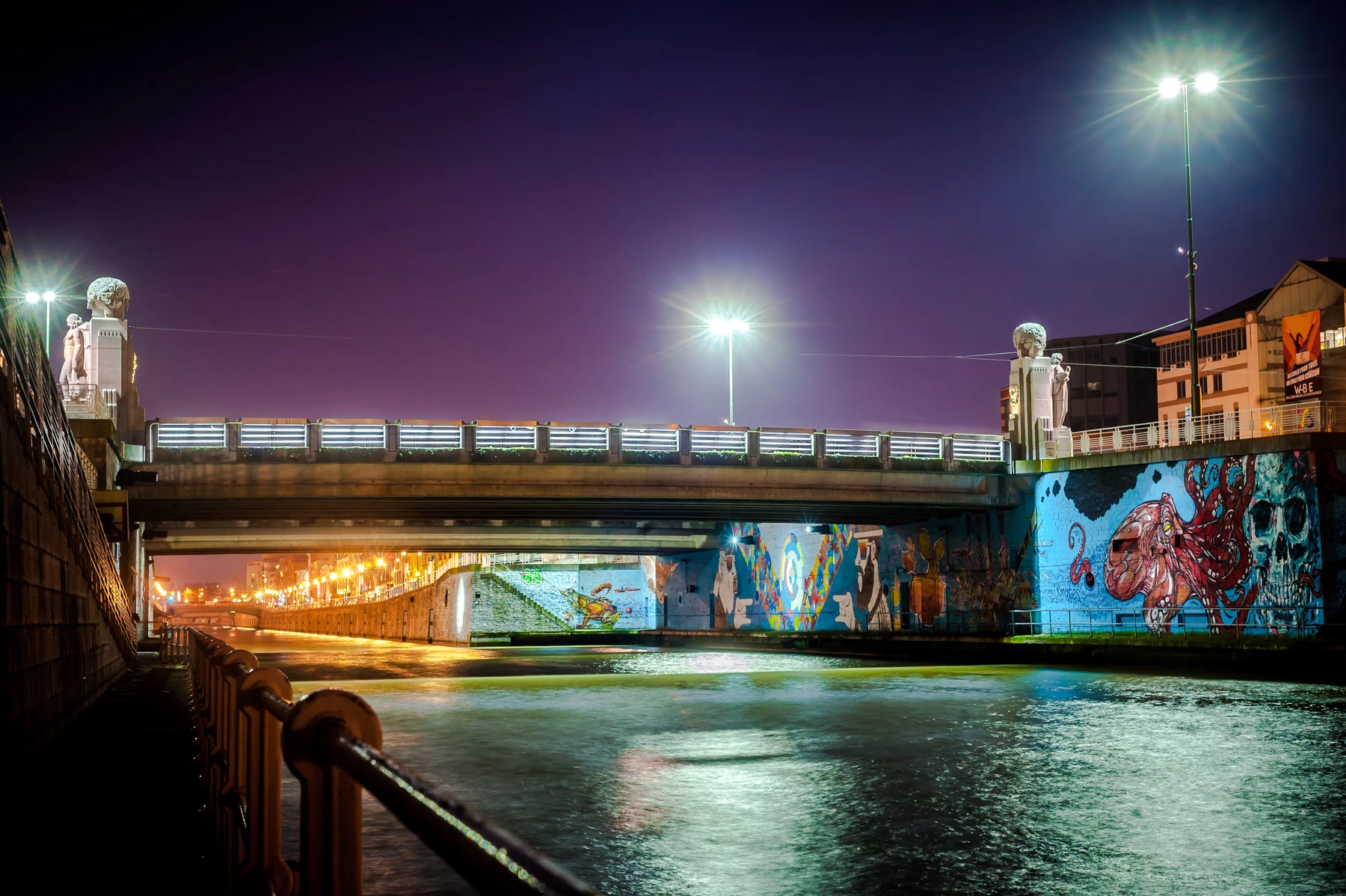
What does the harbourmaster's office of the Port of Brussels do?
As a seaport the Port of Brussels has a captain. That you probably know by now!
But of course, our captain Jerry Vanhemelen does not work alone. He is at the head of the harbourmaster’s office, an important port service that employs no less than 35 people.
The port police, regulation of traffic on the canal, safety of ships, cleaning of the canal ... The harbourmaster’s office has a lot of responsibilities. It also manages our locks and mobile bridges.
The harbourmaster’s office is located in the outer port, next to the container terminal. To carry out its many missions, it has at its disposal different boats:
- a patrol boat, the Bruocsella
- a RIB for rapid interventions
- three cleaning boats, the Castor, the Botia and the Damona, so that all users of the canal, companies but also citizens, can enjoy it in the best possible conditions!
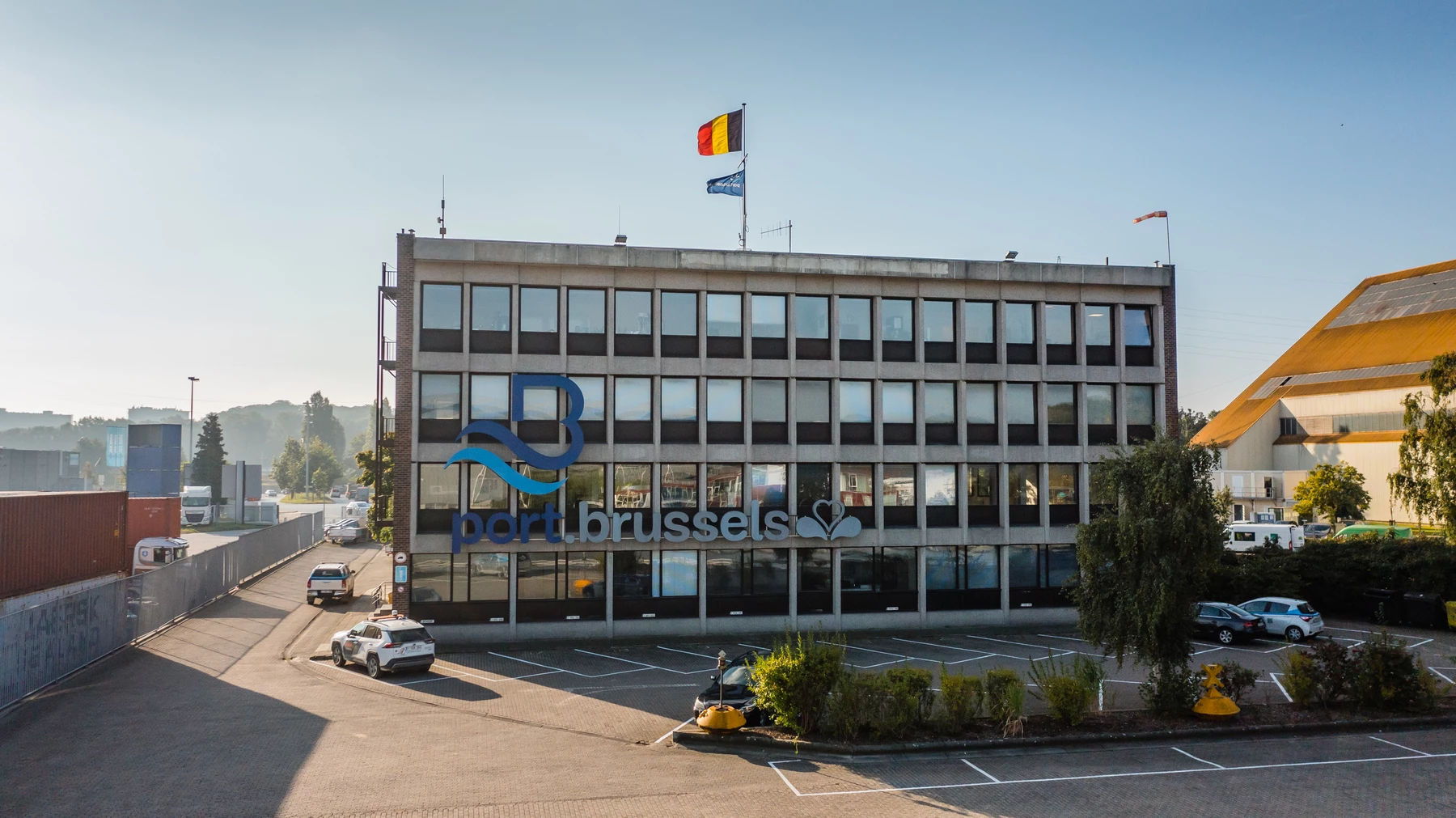
Can the canal freeze over?
Winter has recently swept through the country. That sometimes means snow fun, but also often dangerous and slippery roads. To keep the roads safe, salt can of course be spread. But what about the canal?
The canal, too, can sometimes freeze over. Although current temperatures are not yet low enough for this to happen, it has happened in the past!
The last time there was icing on the canal was in 2009 on 10 and 11 Jan. The canal also froze over in 1996 and 1997.
In such circumstances, we obviously have to act immediately. To remove the ice on the canal, we literally have to break the ice. With an icebreaker of course, a special boat that can clear the waterways.
This way, we can guarantee that navigation will continue to run smoothly, even under the most extreme conditions.
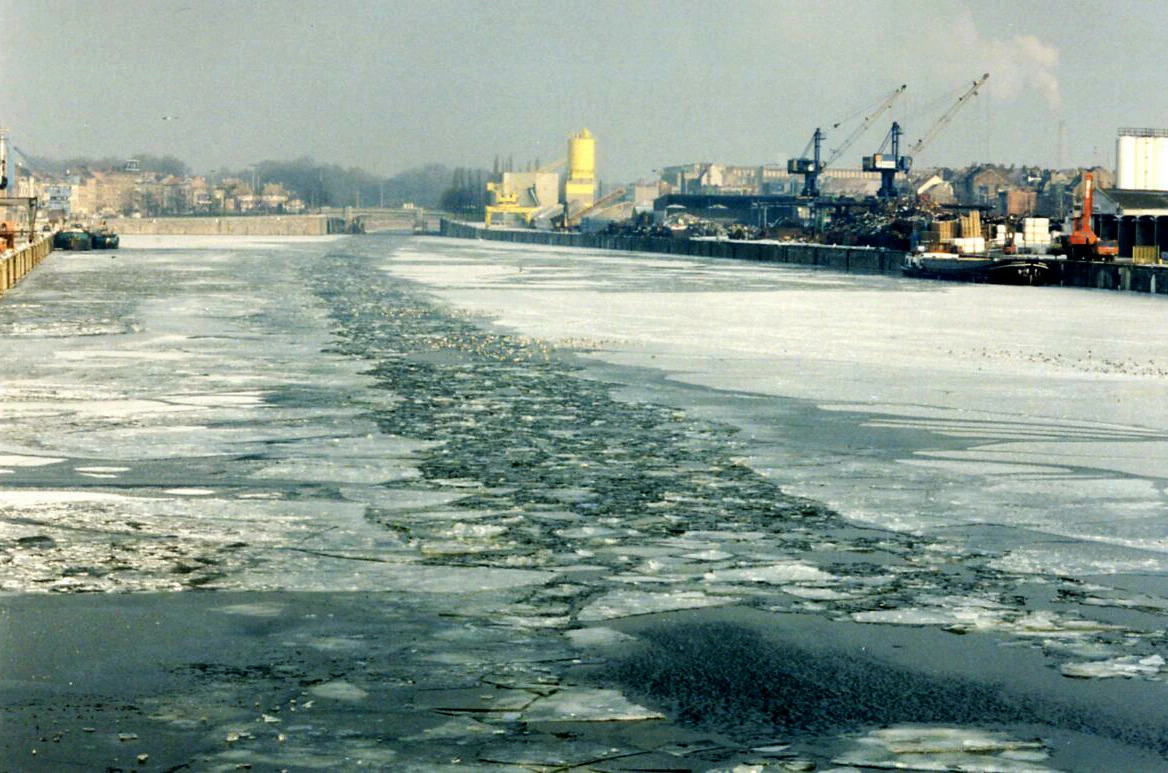
Why do we have a turning basin on the canal ?
In just about every port you'll find something called a ‘turning basin'. But what exactly is its purpose?
Although ships can reverse, this is not always advisable or even dangerous. That's where a turning basin comes into play, a part of the waterway that is slightly. Boats longer than the width of the waterway can then safely turn in such a turning basin.
On the Brussels canal you can also find these basins, two in fact! They’re located at the Bassin Vergote and a bit further north at the Lukoil depots.
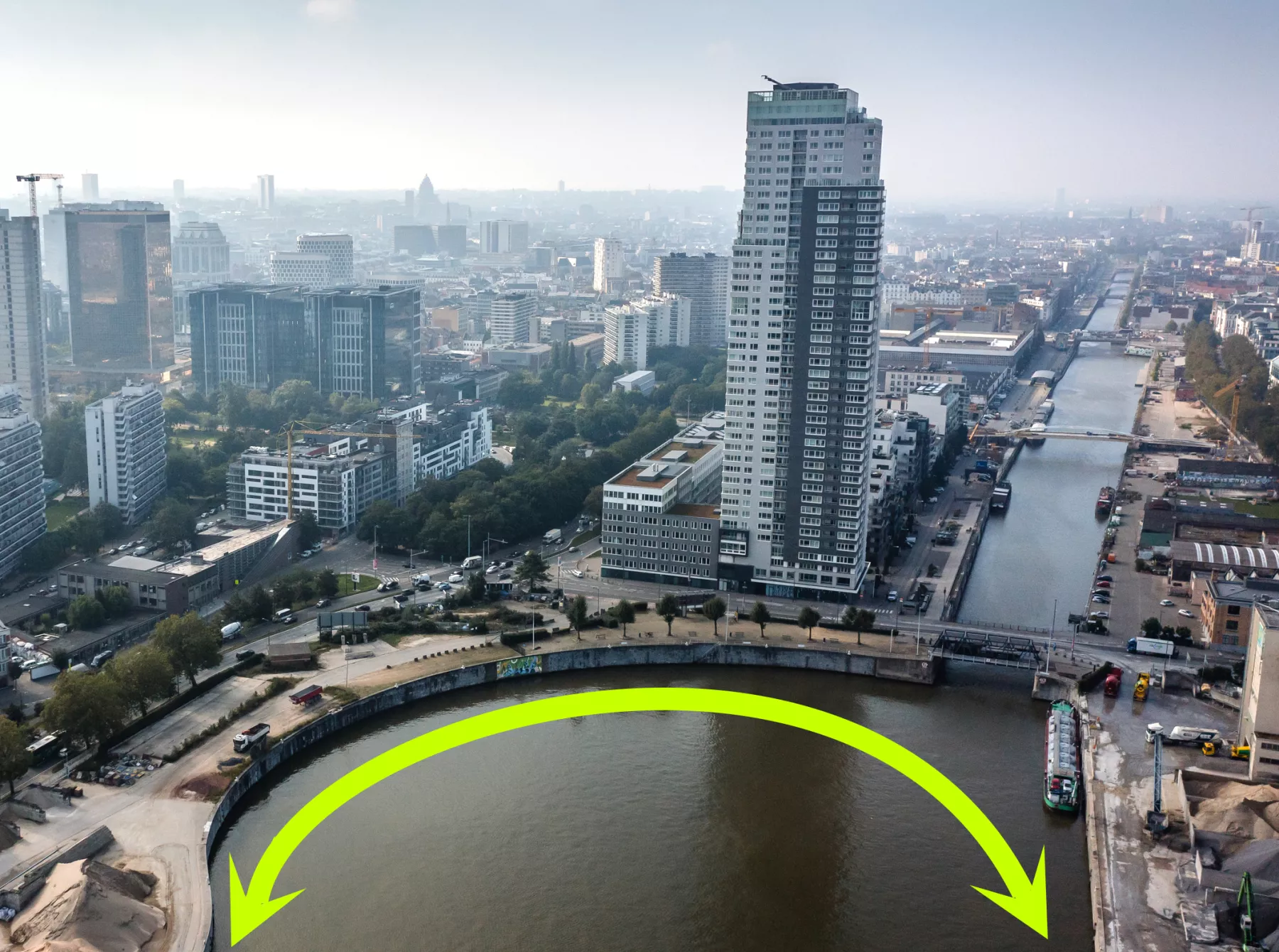
Do you know how many tonnes of goods a boat can carry on average across the canal?
In 2022, we transported 6.8 million tonnes of goods by waterway. Put more simply, that's 2,000 fewer trucks on Brussels roads every day! But do you know how many tonnes of goods a boat can carry on average across the canal?
Several types of boat operate on the canal. Which type is used depends mainly on the type of goods being transported and their origin/destination. Larger models are mainly seen in the outer port, where the draught is also greater. Further south, the draught is slightly smaller.
Construction materials and waste are most often transported by waterway. Class II boats can carry between 400 and 600 tonnes of goods, while Class IV boats go up to 1,500 tonnes.
If you have any questions about the port yourself, be sure to ask them via our website!
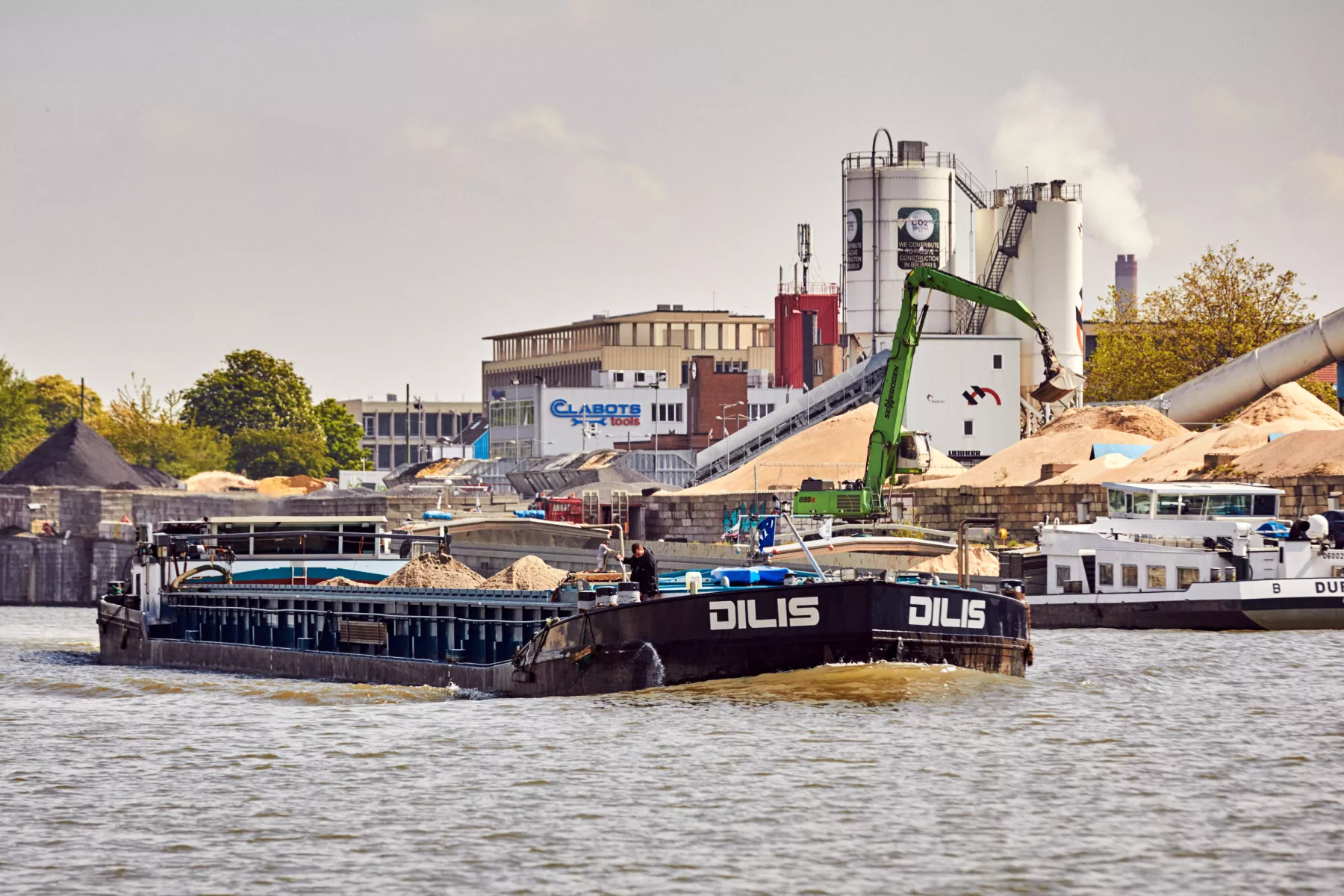
Where are the boats at the port headed?
You can’t say port without boats. But where are all those boats headed? We'll help you find your way!
Our port is perfectly located on the ABC axis: Antwerp, Brussels and Charleroi.
The Netherlands is generally our most important partner. Rotterdam, together with Antwerp provide most of Brussels' hydrocarbon supply, while river ports such as Dordrecht and Breskens supply the majority of sand to the Brussels construction industry.
So in the north, it goes to Antwerp, one of the largest European ports. And in the south to Charleroi, which has excellent links to Namur, Liège and Rotterdam.
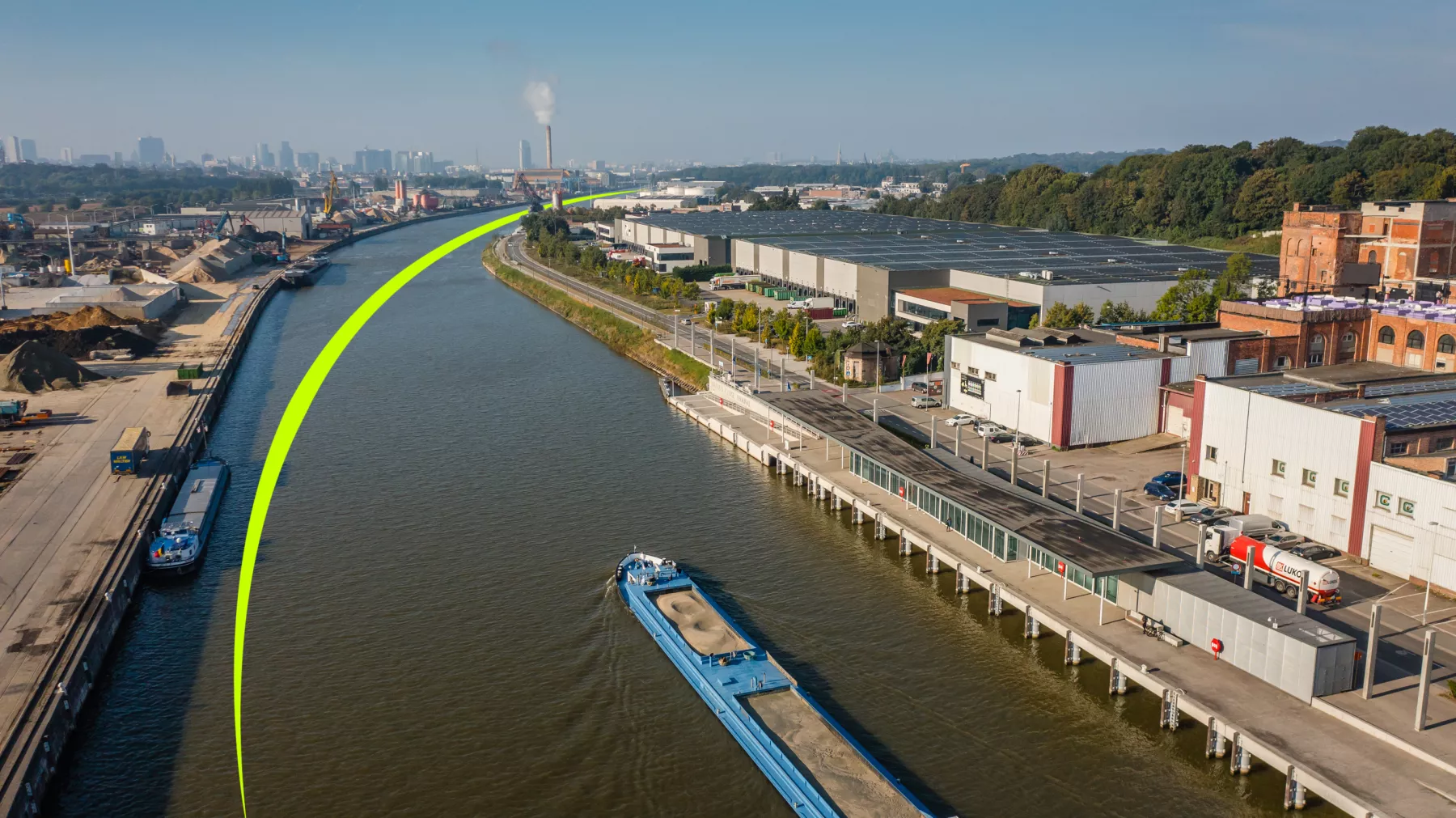
How do we regulate the water level on the canal?
Heavy rainfall or extreme drought, the Port must always ensure that water levels on the canal are correctly regulated. This keeps ship traffic running smoothly!
But have you ever wondered how we do that exactly?
When it rains heavily, rainwater is drained into the Senne and sewers. But when these reach their maximum capacity, we have to proactively adjust the water level at the locks thanks to aqueducts built along each lock. The canal then acts as a buffer and also ensures that the capital is spared from floods.
We also regulate the water level when it is extremely dry or when it’s freezing. The canal is constructed so that it is first fed by higher canal sides. But when this is not enough, we pump water from lower to higher at the locks to compensate.
We leave nothing to chance.
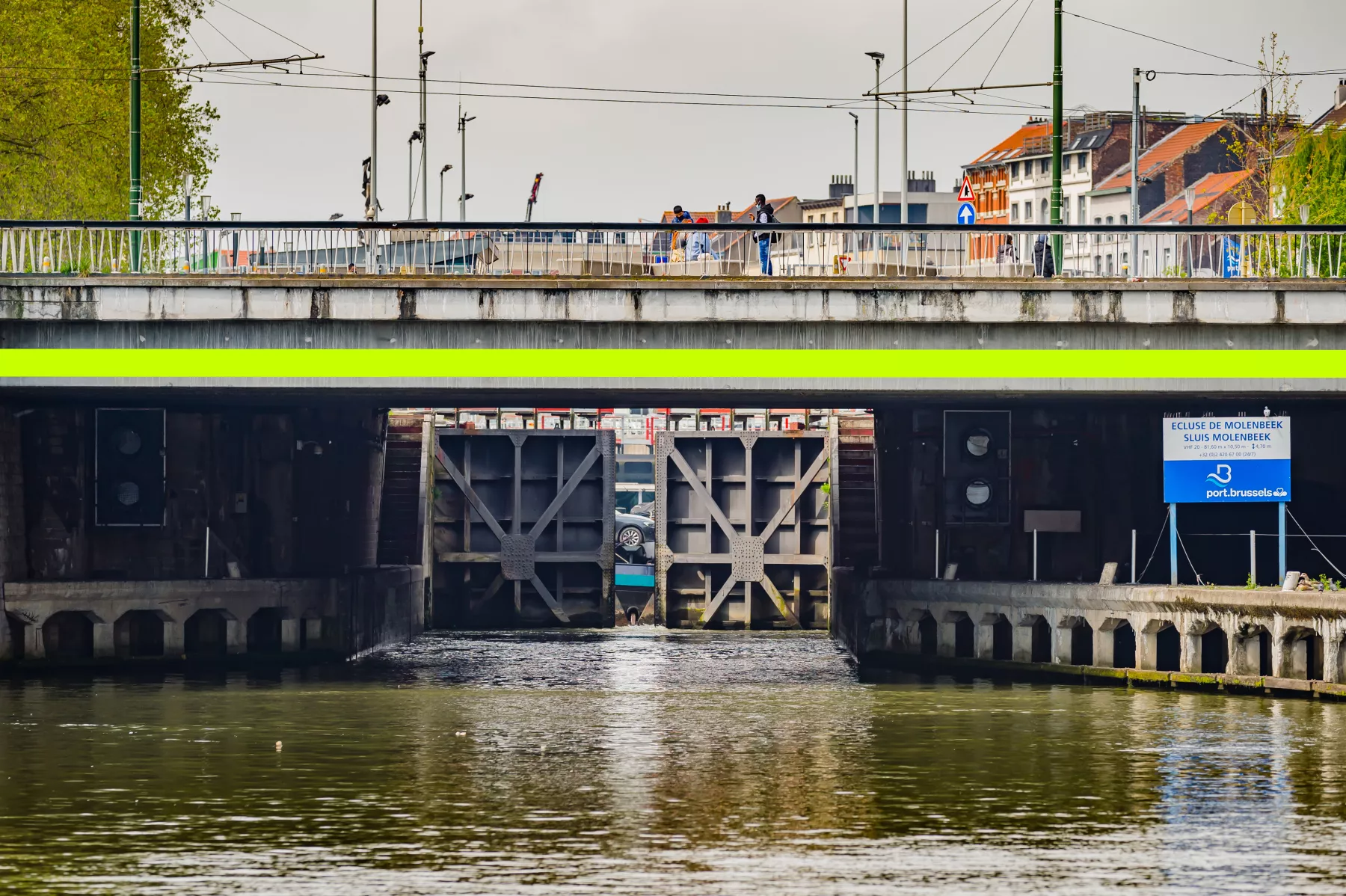
Have you ever wondered how skippers communicate when sailing?
Not with an ordinary telephone, but with a VHF radio! Unlike a telephone, a VHF radio is a transceiver. Transmitting and receiving takes place in the VHF channel (very high frequency). The big advantage is that there is always someone on the other end of the line.
In Belgium, skippers are therefore obliged to have a VHF radio on board for pleasure boats of 7 metres and over. All other vessels must have one or two VHF radios on board.
As a communication tool between skippers, ships or bridges and locks, the marine telephone is very important in case of emergencies or when announcing one’s arrival at a moveable bridge, for example. Because on the water is of course paramount too.

Is there a reason why shipping containers are all painted in a different colour?
A container terminal is often a colourful spectacle of enormous Tetris blocks. Each company paints its container in its own colours. This way, people can quickly recognise which container belongs to which company.
But often the colours are not chosen at random. For example, did you know that reefer containers are always white. This way, they absorb as little heat as possible.
Do you have any questions about our port? Do not hesitate to ask them here!
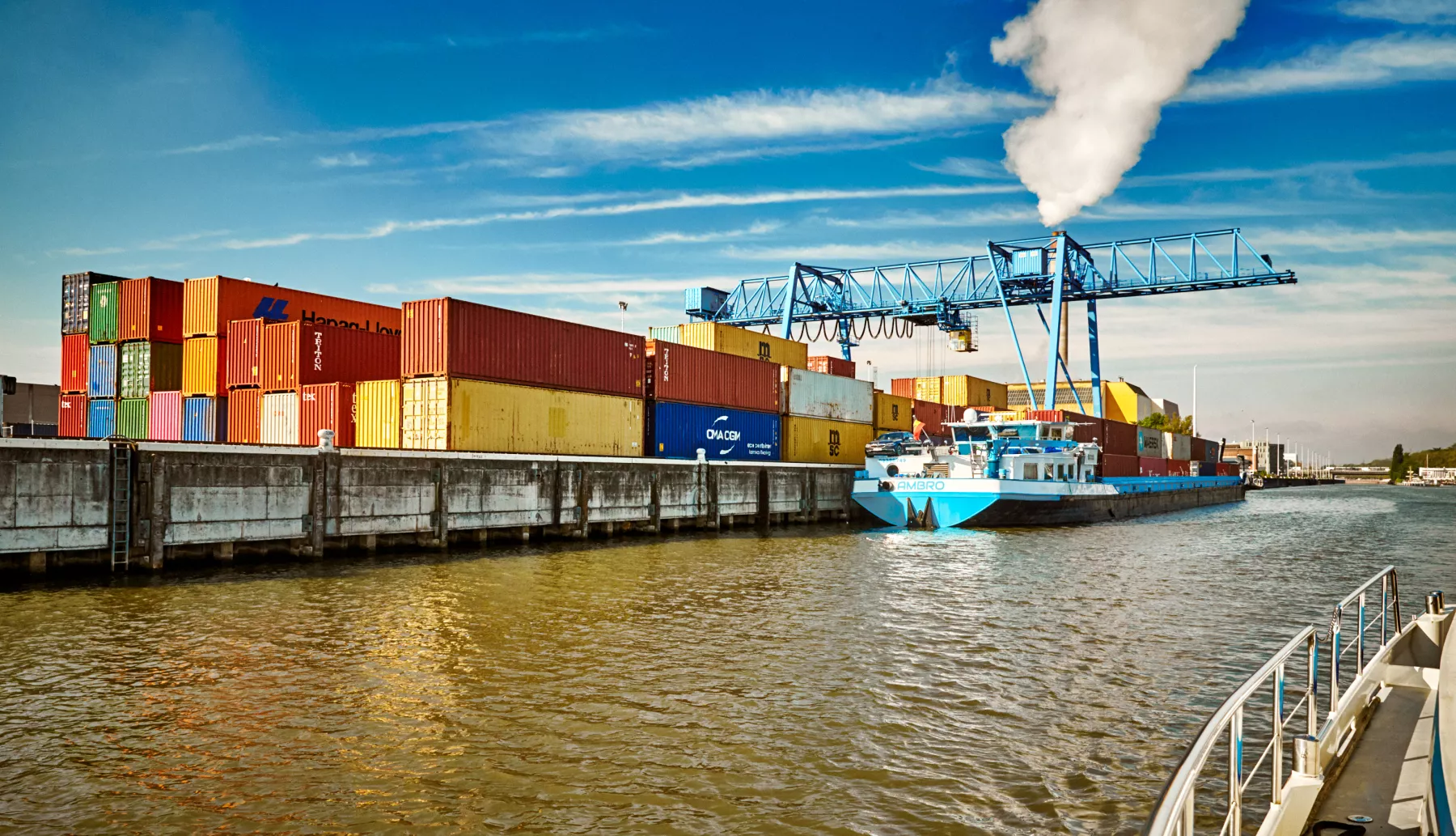
Is magnet fishing allowed on the canal?
Magnet fishing has become increasingly popular in recent years. But is it allowed on the Brussels canal? The short answer is no. And we explain why.
Magnet fishermen fish metal objects out of the water with a heavy magnet. This involves important safety risks. Because not only old iron lies at the bottom of the water, waterways that already existed at the time of the world wars can be full of ammunition, grenades, bombs, etc.
When fishermen bring these dangerous objects to the surface, it is impossible to predict what may happen. This is not only very dangerous for the surrounding area, but also for local residents residents.
So let’s keep the canal safe for everyone!

What kind of goods do we transport in containers at the Port?
In 2021, the Port of Brussels transported some 47,262 TEU. A record for our port, but what does that mean in concrete terms and what kind of goods do we transport in containers?
TEU stands for twenty-foot equivalent unit and is a standard measure used in the industry for containers. So, 1 TEU corresponds to a container that is 6.10 metres long, 2.44 metres wide and 2.59 metres high.
A considerable number of goods can be stored in a container. Just think of toys, garden furniture or clothes, which are then delivered to the various corners of the region!
The Port brings all this to you!
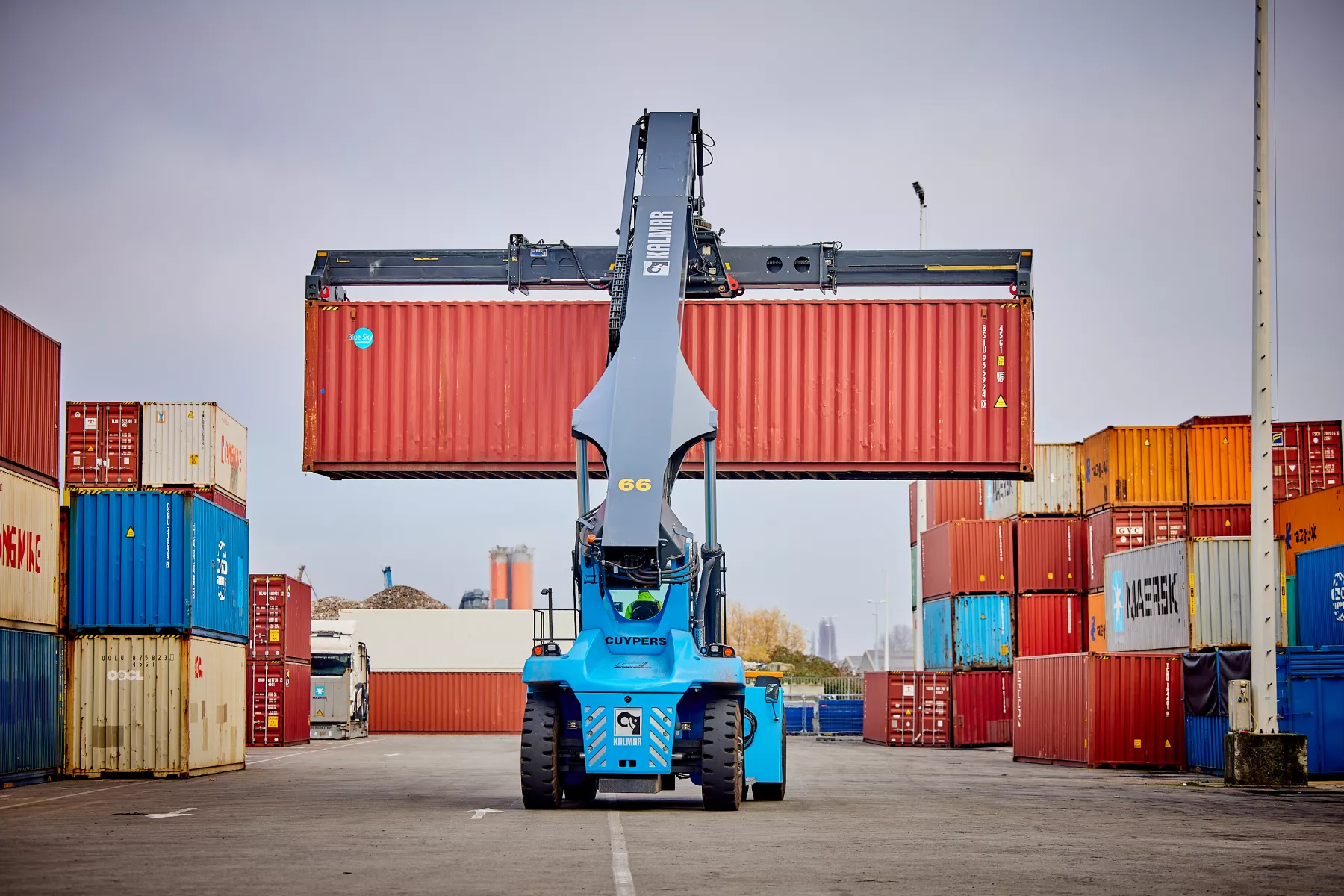
Ever wondered what a replica of an ancient ship is doing at the Port?
In January 2017, the non-profit association Atelier Marin started building a replica of an ancient warship of Louis XIV, which was given the name “La Licorne” (“the Unicorn”).
Disadvantaged youngsters and adults in a socio-professional integration project worked on it at the COOP site along the canal in Anderlecht.
If you want to visit this beautiful showpiece, you’re in luck. During the Fête du Port on 29 May, La Licorne will be open to the general public! After that, the ship will set sail to the Netherlands for a longer journey.
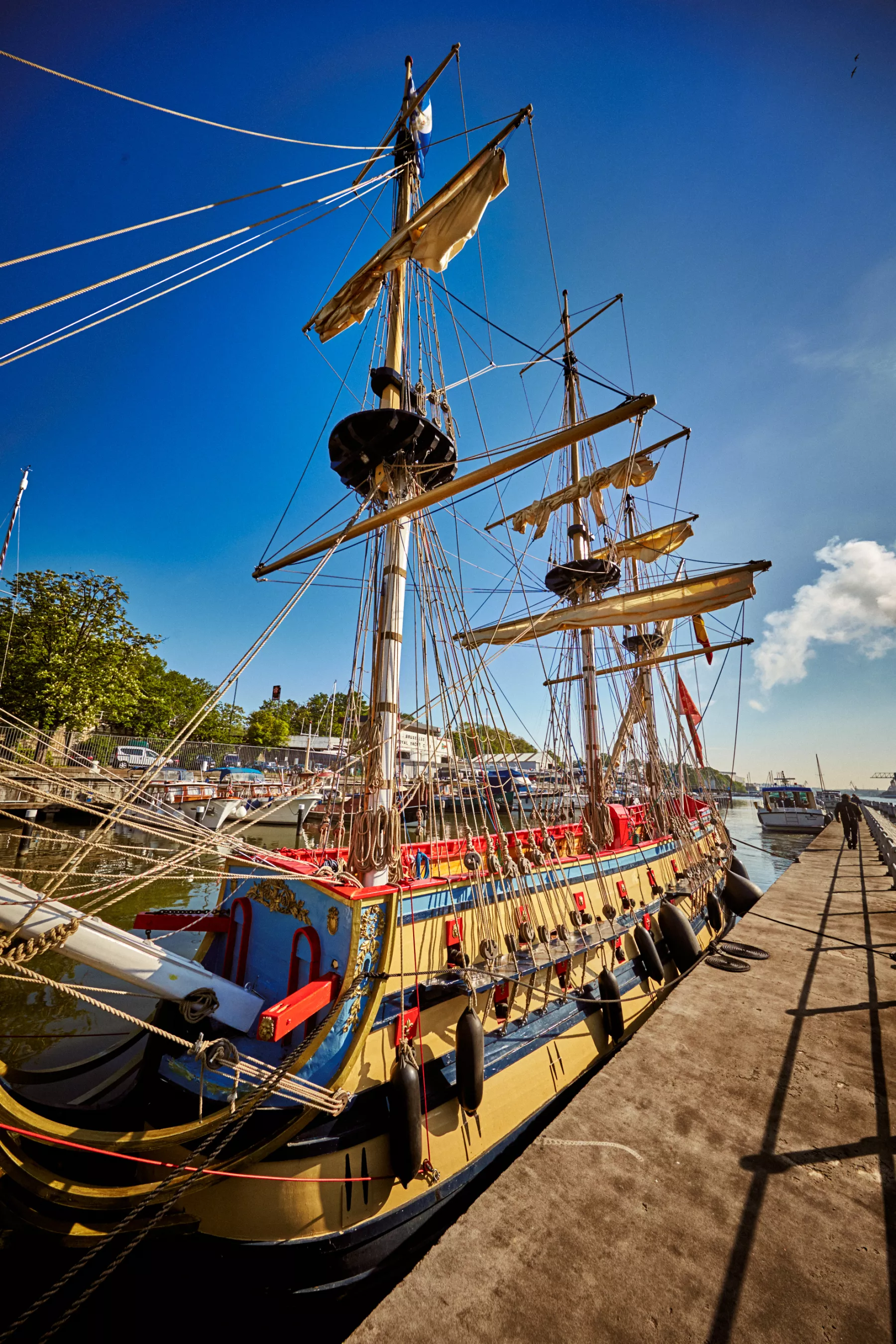
Do you need a navigation licence on the canal ?
In Belgium you need a navigation licence if you want to sail a boat for commercial or professional purposes, if it can sail faster than 20 km/h or if the hull is longer than 15m.
And what’s the minimum age to pass the exams? In this case you can pass your navigation exam from the age of sixteen.
Interessed? Have a look at the website of the FPS Mobility: Brevet obligatoire | SPF Mobilité (belgium.be)
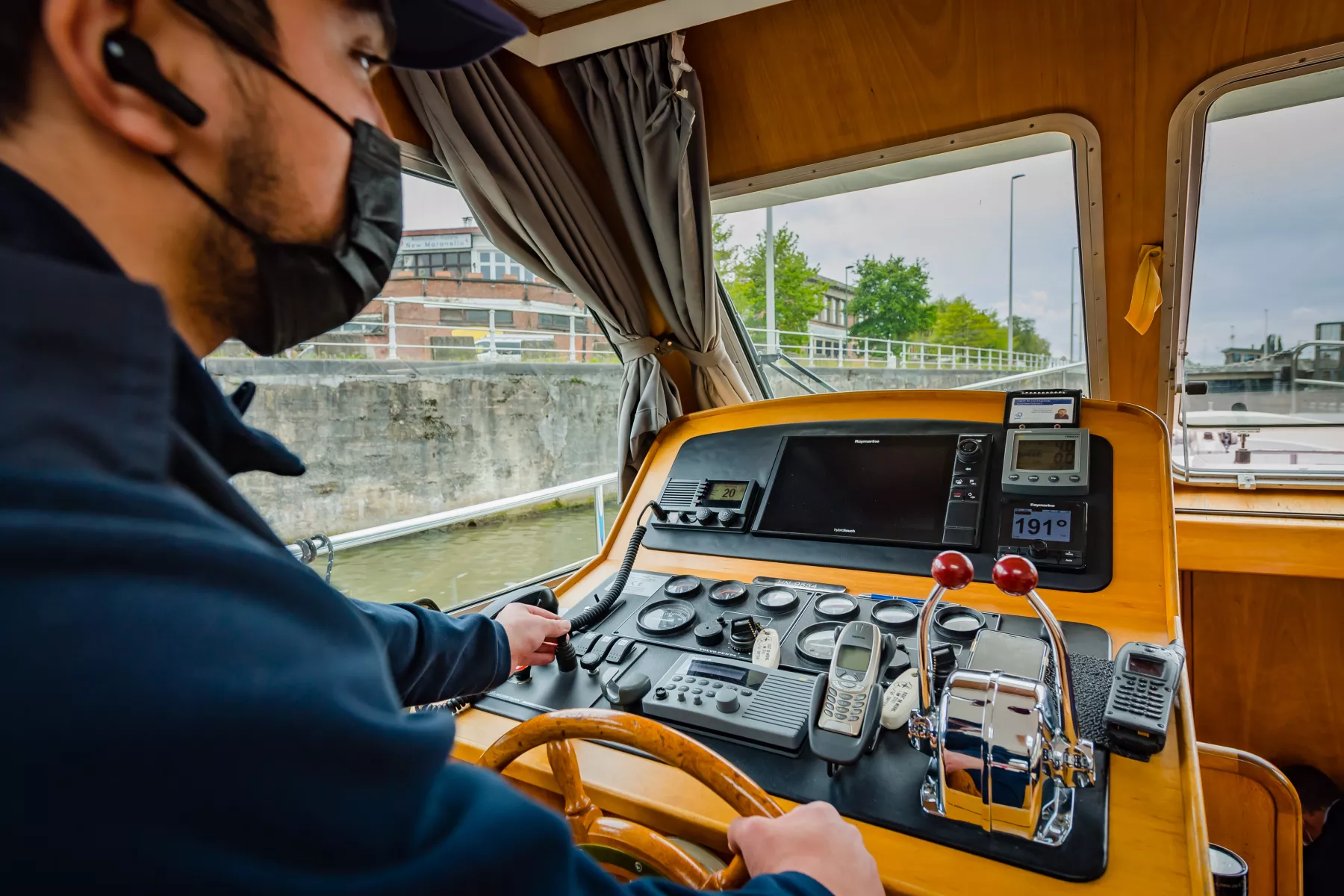
How many solar panels are there at the Port ?
You can spot our solar panels on the roof of our headquarters, at the harbour master's office and at the locks.
Our 379 solar panels produce 104.87 MWh/year, which is equivalent to the consumption of 52 households.
The green electricity produced by these panels allows us to move even further towards a greener future.
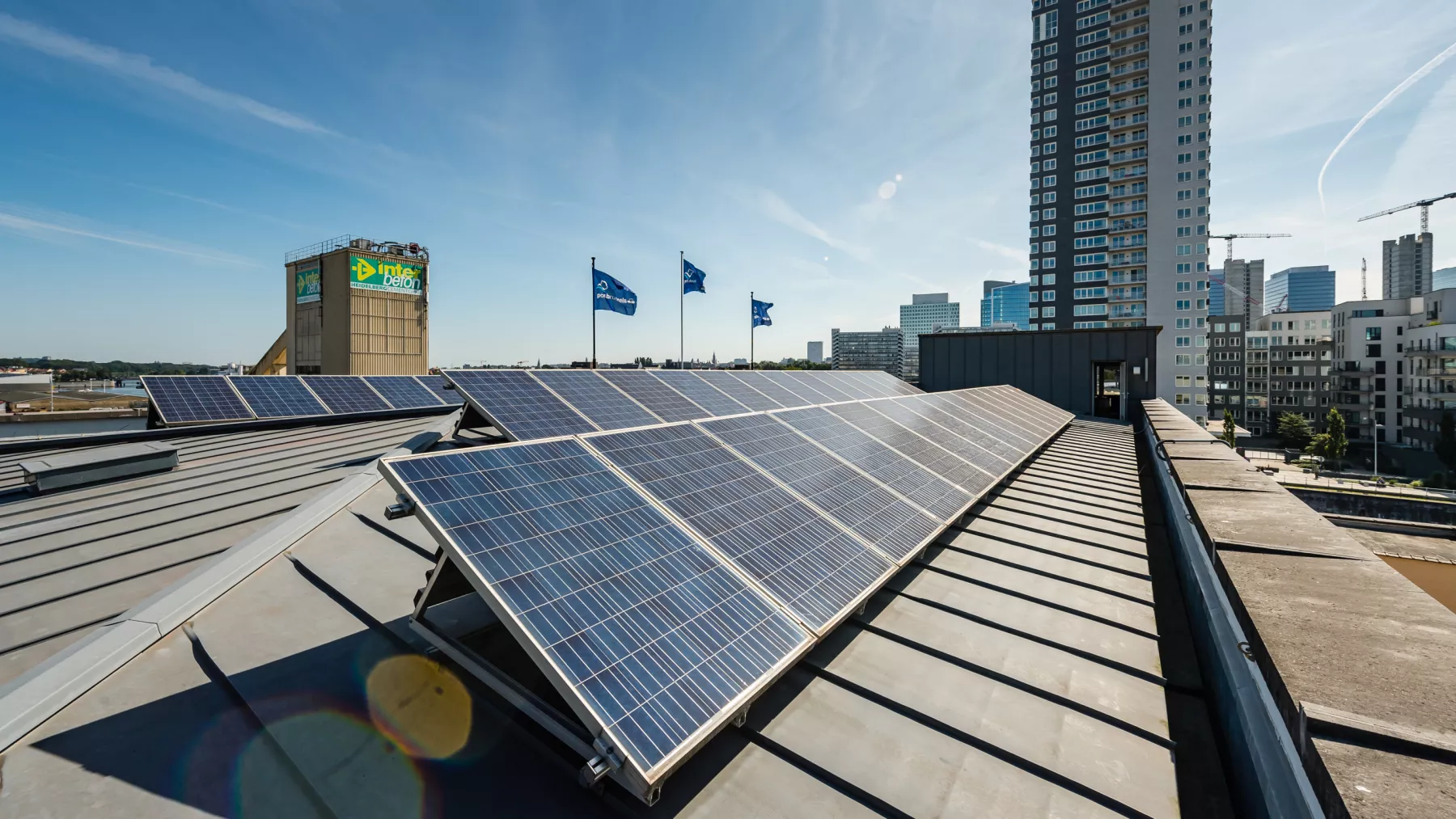
How many people work at the port?
Lock keeper, harbourmaster, crane operator, engineer, CEO of a large company or labourer. The most diverse profiles work at the Port of Brussels.
There are no fewer than 9,000 of them in all, and all their activities and experiences bring life and dynamism to the port. Together they make the heart of the port beat!
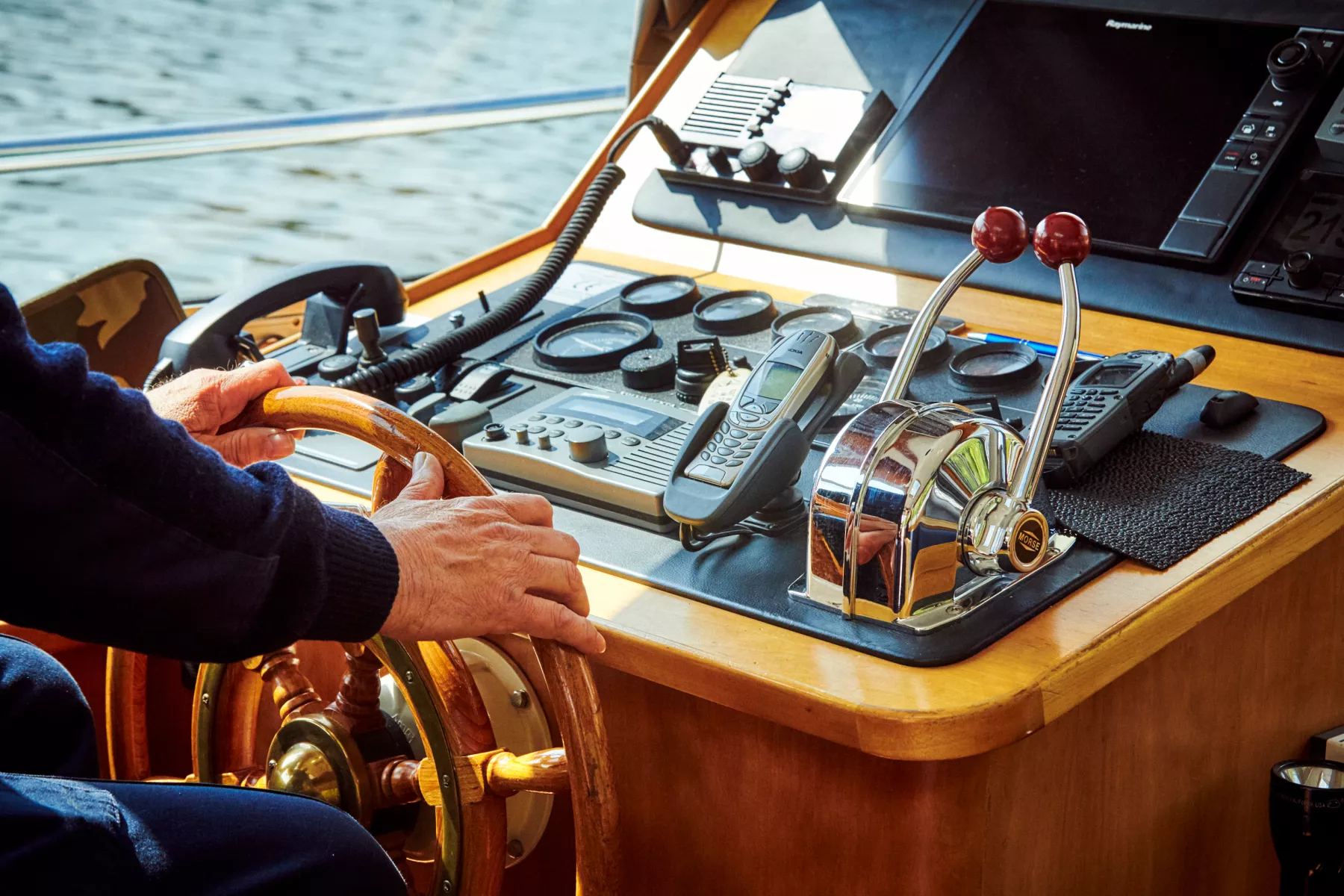
Can you sail as fast as you want on the canal?
Even on the waterway, sailors need to follow speed limitations. These speeds depend on the type of vessel and also vary according to the waterway. On the Brussels-Scheldt canal, for example, the maximum speed is between 8 and 20 km/h.
And just like on the road, these speed limitations do serve a purpose. Excessive speeding on the waterway creates waves that could damage quays, riverbanks or other boats. Slower sailing is also more sustainable, more economical and safer for all waterway users.
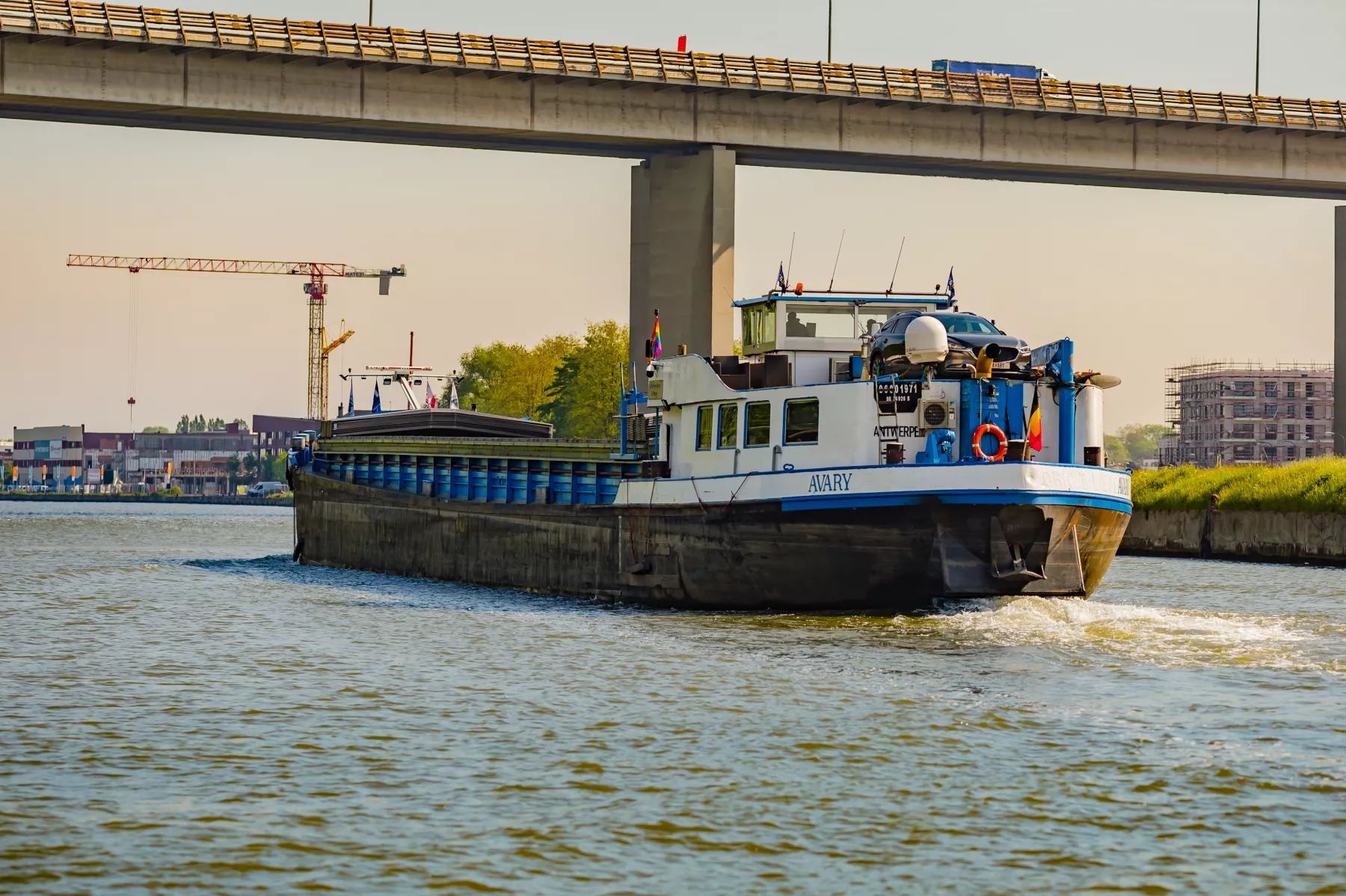
So why do we have different docks?
A dock is a place where the waterway is wider, allowing ships to load and unload their cargo and store their goods in the areas alongside the waterway. To make the best possible use of this land in an urban environment, we therefore try to form clusters wherever possible.
For example, a sand and gravel supplier is located next to a concrete works, resulting in greater efficiency in the way the land is used.
The names of the docks were not chosen at random. Almost all the names refer to former governors of the Province of Brabant in former times, each of whom was also Chair of the Board of Directors of the port. That is how Emile Béco and Auguste Vergote gave their names to docks that can be seen today. 😉
Do you have any questions about the port and its activities? Write them in the comments!
So do you know how deep the canal is in Brussels?
It is a bit shallower than that, and it is not the same depth everywhere. From the outer port in the north to the Van Praet Bridge, the canal reaches its deepest point of 5.8 metres. In the Vergote Dock and Béco Dock the canal is about 4 metres deep. Throughout the rest of the canal it is up to 2.5 metres deep.
These depths allow vessels to move in and out of the capital without difficulty.
Before you go in to test out the depth for yourself, we must repeat that swimming in the canal is strictly forbidden. Stagnant water contains a lot more sludge, making it much cloudier and a lot more difficult to see hazards. The risks of sudden drowning are therefore higher than in other watercourses such as rivers.
If you are looking to freshen up, we can warmly recommend the Flow outdoor swimming pool near the Biestebroek dock 😉
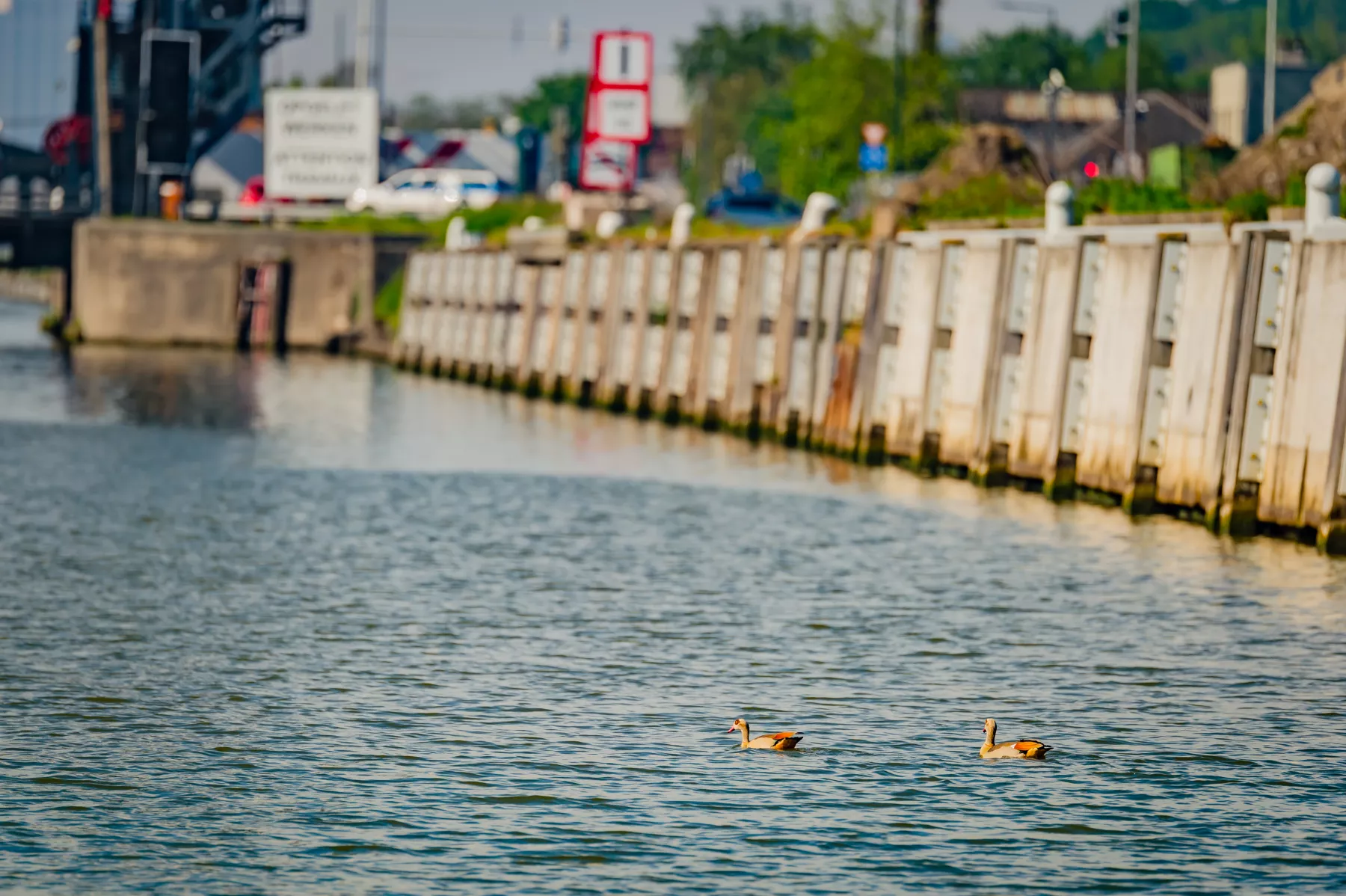
Is fishing allowed there, and where are the best spots?
We can tell you everything you need to know!
Fishing is regulated at the regional level, and according to the police regulations governing the port, it is in principle prohibited everywhere on the canal. Fishing zones are, however, marked at specific locations in the canal, at places where you can come to fish safely. So you can’t just cast into the canal anywhere you like. First of all you will need a fishing permit. These are available from your nearest post office.
Of course there are some places where fishing is allowed. The fishing areas in the canal are located between Anderlecht lock and Drogenbos (not within 100 m of the locks), and between the Van Praet bridge and the Vilvoorde bridge. You can fish in the canal for roach, carp, pike, tench and eels.
Magnet fishing is popular right now, but it is forbidden in the canal because of the many safety risks. That is because you might not just bring up some old iron; you could find more dangerous items such as weapons or shells.
So let's keep the canal safe!
For more information about fishing in Brussels, visit De visvangst | Leefmilieu Brussel
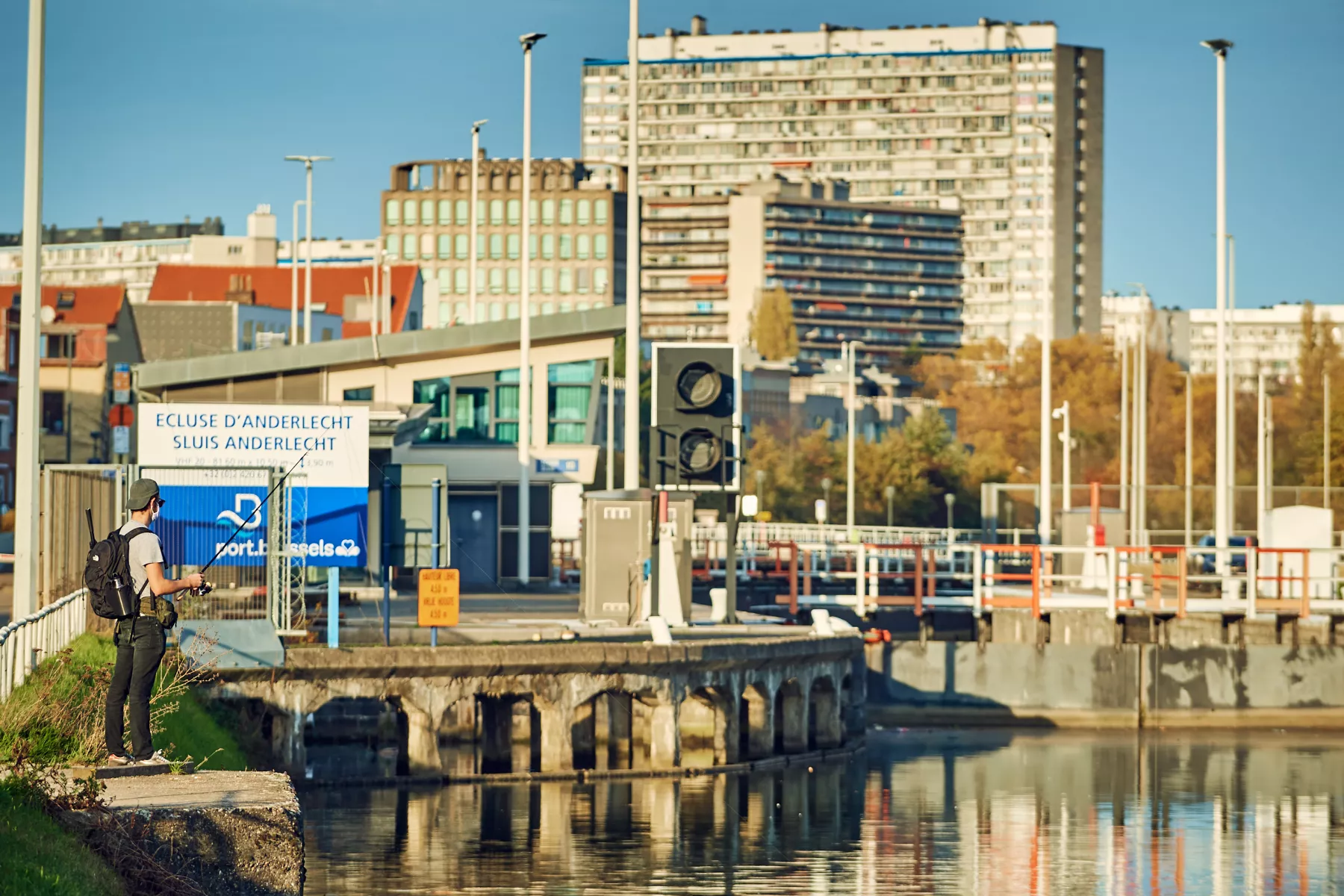
How many vessels pass through our port every day?
A port is nothing without its ships. How often do they arrive in our port, and when do they come?
The ships that pass through the Port of Brussels do not operate on a fixed timetable. They are chartered by various different companies that are active in the port, based on their needs and logistical flows. Some ships simply pass through Brussels without stopping. That is called transit traffic.
Some 20 or 30 ships visit our port every day.
The European trend towards inland navigation vessels with increasingly large capacities means that more cargo can be transported on fewer ships. Those ships are getting bigger, but that is not a problem for our outer harbour. It has a very good capacity for an inland navigation port.
If you are heading for Charleroi, however, the situation is different. On that route the size of the locks means that the size of the ships is also limited to the European standard: 80 metres long with a maximum capacity of 1350 tonnes. That is still quite large, equivalent to the capacity of dozens of trucks. So inland navigation offers immediate benefits in terms of both the environment and our quality of life!
Do you have any questions about our port? Let us know!
Why is that?
Is something wrong with the water in the canal ?
We can reassure you that this is completely normal!
The water in the canal takes on a brown colour after periods of heavy rain. The canal has an important role as a storm basin, to prevent flooding. When there has been heavy rain of the kind that we saw in Brussels last week, the surplus water is diverted from the city’s drains to the canal to prevent flooding in the streets. So this is a combination of waste water and rainwater.
Since a large amount of waste water and rainwater has suddenly entered the canal, the water quality is also temporarily less good.
The brown colour should fade away in the coming days, as the particles suspended in the water are carried away downstream.
So that’s one more mystery solved. 😉
Do you have any questions about our port? Let us know in the comments!
Do you know, however, what makes up the largest proportion of the goods that pass through the port each year?
In 2020 building materials were traditionally at the top of the list of goods. That was despite building sites having to close during the first lockdown. Oil products come second, with containers in third place.
No less than 4.9 million tonnes of goods passed through the port in 2020.
As a local resident, you come into contact with these every day. For example, the cereals used to make your bread and the petrol in your car are transported by water 😉
How big is the Port?
You probably know that the Port of Brussels is Belgium’s second largest inland port, but did you also know how large the port is?
There are approximately 200 customers located within the port, and they all need space and infrastructure to carry out their activities.
The total area of the Port of Brussels covers 107 hectares, with 6.5 km of quays along the waterway as it crosses the Brussels Region over 14 km from north to south. You can fit 214 football fields into 107 hectares!
The Port also includes 80 hectares of water, and the left and right banks have a combined length of 28 km.
If you are in the port and forget which way is north, so you are not sure which is the left and which is the right bank, the same principle applies as with rivers: when you look towards the sea the left bank will be on your left-hand side.
Just like regular traffic lights, these lights at our different bridges and locks help to manage water traffic.
The rules are very similar to those used for road traffic: green means go, while red means stop.
As you can see on this photo, only pigeons are exempt from following these rules 😉
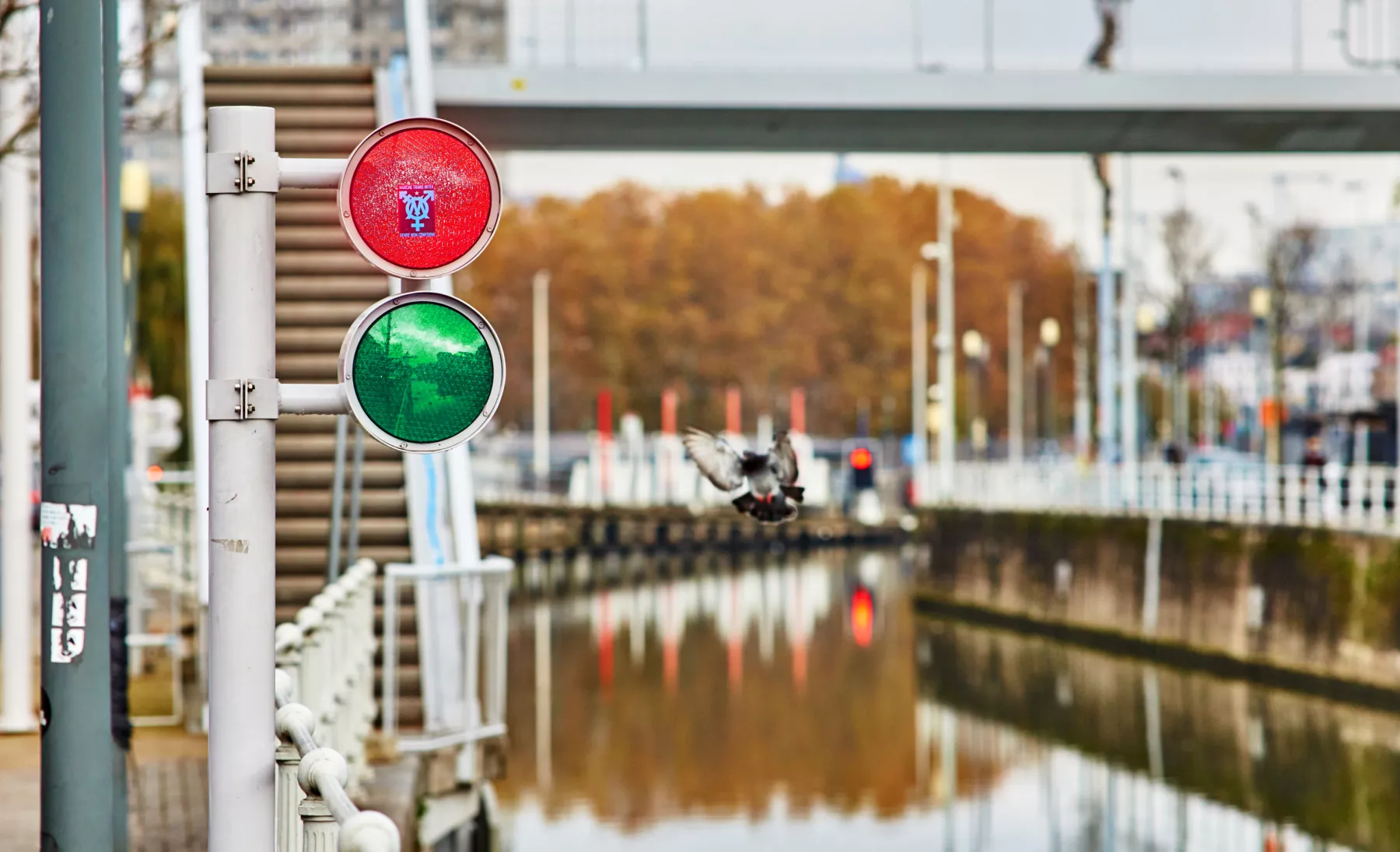
The port and the railway are a perfect match.
When you think of the port, you might not immediately picture a railway. Nevertheless, railways play an important part in the work of our port!
Water and rail transport are the two most environmentally friendly modes of transport, and they are vital for bringing supplies into Brussels.
The former steam train at the Pont des Armateurs/Redersbrug is the perfect symbol of this. The historic train was installed in 2011 to mark the 175th anniversary of the railways in Belgium. This train was still running in the Brussels port area as late as 1969!
So why is it in that exact place?
The reason is that the Allée Verte/Groendreef is only a few metres away. In 1835, that was the starting point for the very first passenger train on the European mainland, when it left Brussels to Mechelen line.
The water, the railway and the road. In the port they all come together.
#porttrivia #portofbrussels

Have you ever wondered where the Buda Bridge gets its name from?
When you hear Buda, you probably spontaneously think about Budapest, Hungary’s capital. And you would be right!
In the 17th century, the siege of Buda put an end to 150 years of Ottoman rule in Hungary. This event sparked festivities all around Europe, stretching as far as our regions.
The name of the district of Brussels called Buda probably comes from a 17th century farmhouse near the present bridge, which was given the name Buda to celebrate the end of the siege of Buda. You may also know Buda as the old city that is now the upper town of the Hungarian capital, Budapest.
So the name of this beautiful bridge is a legacy of this old Brussels’ district.
The port always feels a bit like travelling 😉
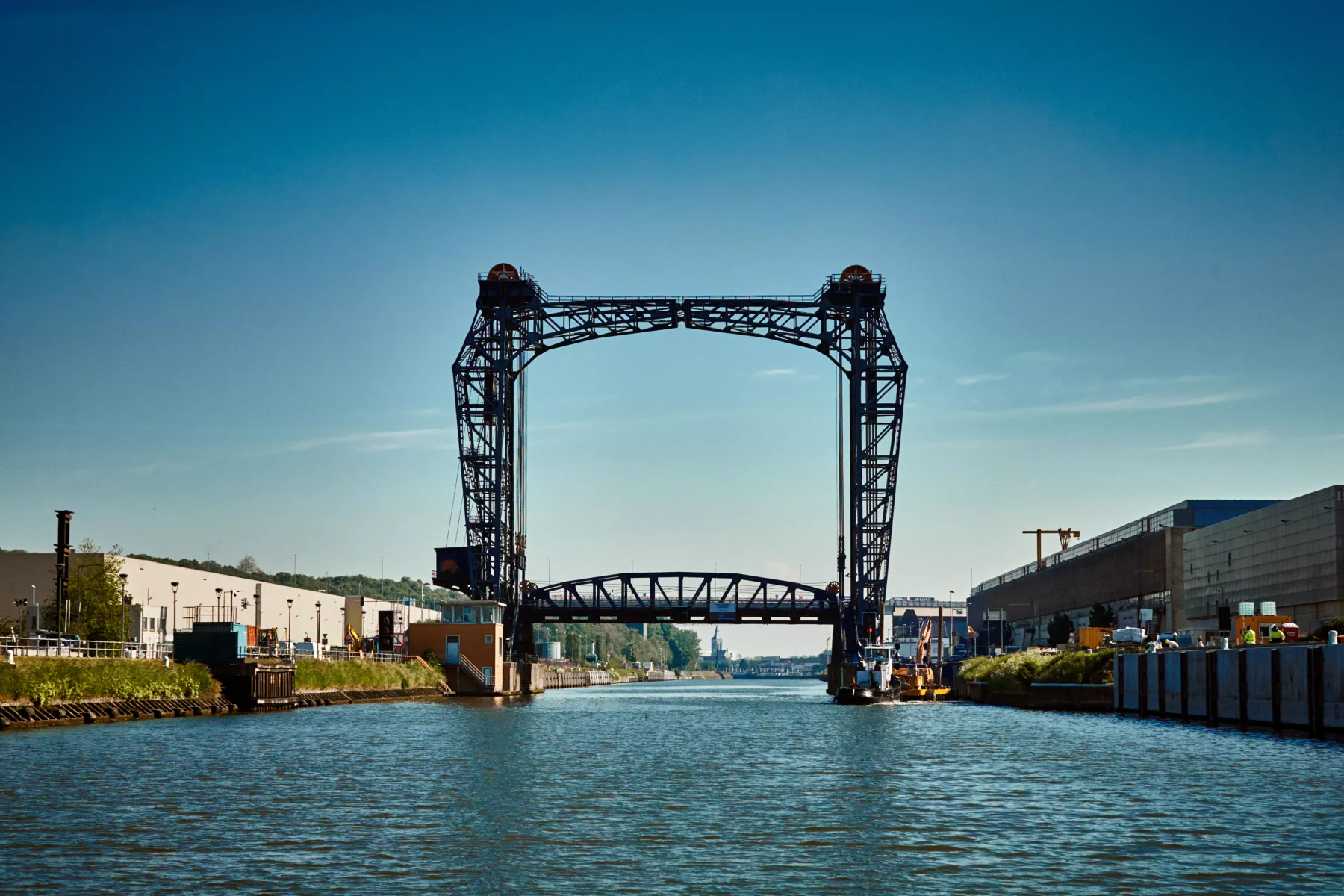
Did you know that the canal also has an important role in water management in Brussels?
During periods of heavy rainfall, rainwater flows into the river Zenne and the drainage system. Once these reach their maximum capacity, however, the excess water flows into the canal. At those times the canal acts as a storm basin, the largest one in Brussels. That basin is the reason why the Grand’Place/Grote Markt is not regularly flooded.
You may have seen that the water in the canal sometimes looks brown when it has been raining. That is because the water from the river Zenne and the drainage system bring branches, plastic, sand etc. along with it. To cope with all this waste, our cleaning teams carry out frequent patrols in our two cleaning boats and three waste traps have been installed. That is how we keep the canal clean.
Shipping does, of course, still need to pass through at times when there is not much rainfall. The canal is designed so that it is supplied from bodies of water higher up, according to the principle that water flows downhill. The most important sources of water for the canal in Brussels are the river Sambre/Samber, the Lacs de l’Eau d’Heure and the former basins alongside the river Zenne. When conditions are very dry for a very long time, that is not enough. Pumps have therefore been installed on the locks, to ensure that shipping can keep moving even during dry periods.
The importance of the canal for the capital should not be underestimated!
Do you know what it is?
The TIR centre (TIR stands for Transport International Routier) was built in the 1950s by a company called Naamloze Vennootschap Zeekanaal en Haveninrichtingen van Brussel, the forerunner of the Port of Brussels.
The complex covers several storeys, with a total floor area of about 160,000 m2.
The TIR centre is the second generation of warehouses, suitable for the logistics activities of the 1950s to the 1980s, in the age of the truck. The site was in fact partly built for the 1958 Brussels World's Fair, and the architecture is therefore quite typical of that period.
Now we have moved on a long way from the age of the truck and these storage facilities no longer meet the requirements of modern logistics, with goods needing to be stored at greater heights. The complex is, however, still ideally situated close to the city centre, and it still plays a major role in meeting the city’s logistics needs. The site is also connected to the waterway via a platform in the Vergote Dock. That makes it possible to transfer palletised goods from the water to the road.
Of course we are also looking to the future. We are currently carrying out a large-scale study to decide how to repurpose this centre and adapt it to meet the challenges of tomorrow's city and tomorrow’s port. We are therefore focusing on improving the way urban distribution is organised, to make it more respectful of the city’s neighbourhoods and residents.
What exactly is dredging, what is it for and how does dredging take place? We can explain!
Dredging means removing the sediments that accumulate over time on the floor of the waterway (in our case, the canal). The sediment accumulates more or less naturally and in Brussels it is also a result of the canal’s role as a storm basin, absorbing the overflow diverted from the drainage system.
Dredging is done using a ... dredger. This is a type of boat that is specially designed for this work.
So why is it necessary to dredge waterways? If we did not do this, the sediment would gradually reduce the depth of the water. That would mean that boats would no longer be able to use it. In Brussels, about 40,000 m3 of dredging sludge has to be removed every year. We organise dredging campaigns in different parts of the port every year, wherever it is necessary.
After it has been removed, the dredging sludge is stored in barges and then cleaned. In many cases it is then used again: even dredging sludge forms part of a circular economy!
Take a look behind the scenes with us and discover how the port operates!
Today: how does a lock work?
A lock on a canal is based on the principle that water flows from a high level to a lower level. Modern, efficient locks are needed to bridge differences between water levels.
A lock consists of a lock chamber and two lock heads, with a lock gate in each one. The water level in the chamber adapts to the water level either upstream or downstream, allowing ships within the lock chamber to be raised or lowered.
In the Brussels Capital Region we have two locks that are managed by the Port, in Molenbeek and Anderlecht. Each one is equipped with electric-hydraulic systems to open the gates, which are operated by our lock keepers. This allows traffic on our inland waterways to flow smoothly!
Do you have any questions about our port? Let us know in the comments!
